2024 Renault Clio Hybrid Review: Vive La Supermini

Pros
- A grown-up feeling car in a compact packageSpacious, high-quality interior
Cons
- Interior is slightly gloomyNot quite the most enjoyable drive in its class
In many ways, the continued existence of the Renault Clio is a breath of fresh air by itself. The supermini class probably isn’t under the immediate threat of extinction that some would have you believe, but it’s certainly shrinking.
The Ford Fiesta is dead, and there are doubts over the future of the VW Polo, which may well leave the Clio as the last one standing of that trio of super popular and long-running nameplates.
Names with longevity like that are important to humans – sappy, nostalgic beings that we are. Nearly everyone has memories of cars like this – getting into a Clio, for instance, will always remind me of my mate Dan’s first car, a faded burgundy Mk2 with a bonnet that didn’t always like to stay properly latched when driving.
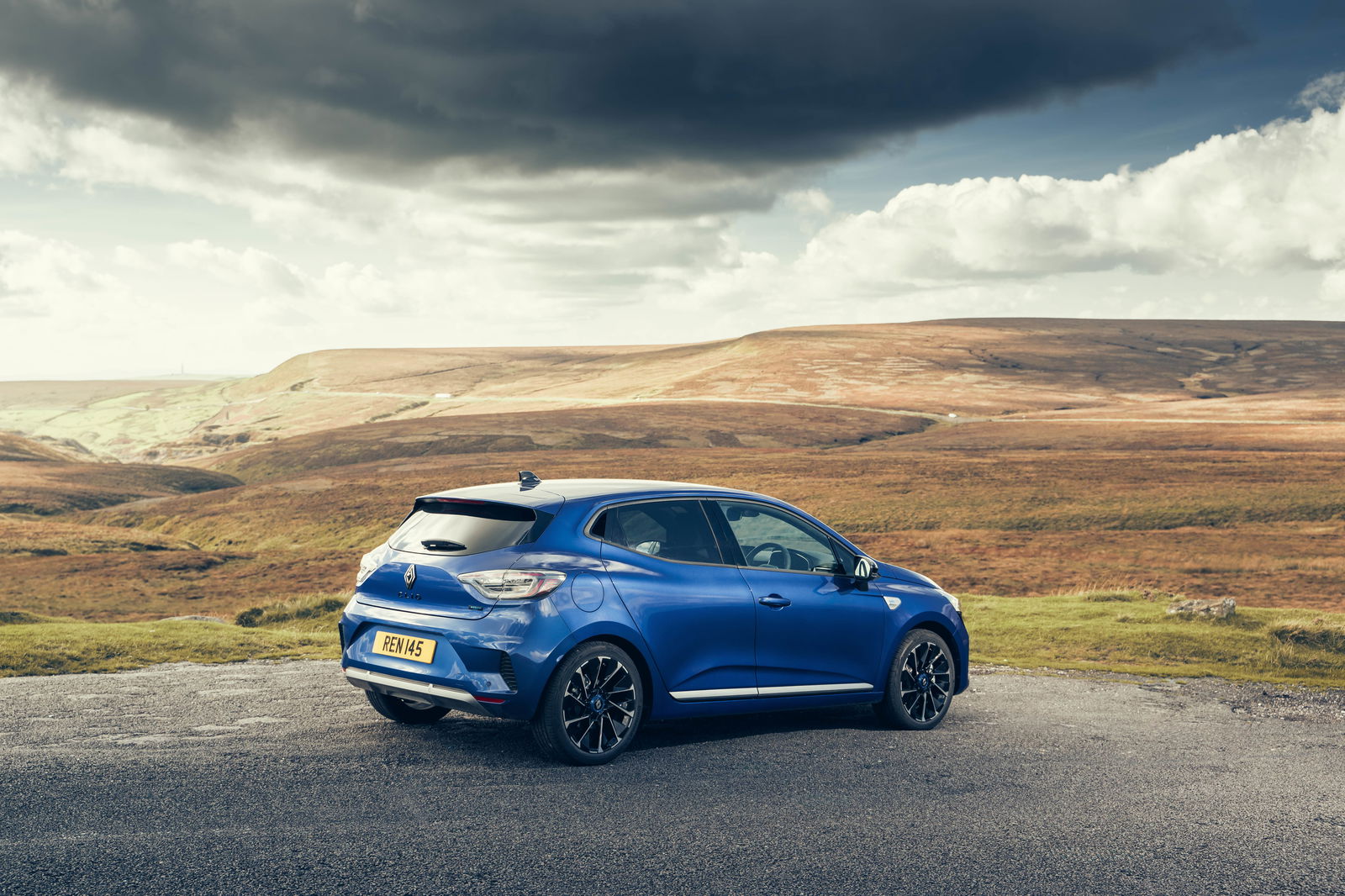
Nostalgia alone can’t keep the supermini alive, though. In an age when people crave tech and convenience, and legislators demand active and automatic everything, they have to pack big car characteristics into small car packages. It’s with this in mind that Renault facelifted the fifth-generation Clio last year, four years after it launched.
This isn’t some barely noticeable nip-and-tuck, a la Volkswagen Golf Mk8.5. The front end is totally new and has gone all angry, with lots of LEDs, slashes and creases. It approaches fussiness, but it’s been well-executed, and this is a good-looking little car.
In the UK, you’ve got two powertrain choices: a 1.0-litre, turbocharged petrol three-cylinder with 89bhp and a six-speed manual, or a 143bhp hybrid setup with a 1.6-litre four-cylinder and a dinky 1.2kWh battery.
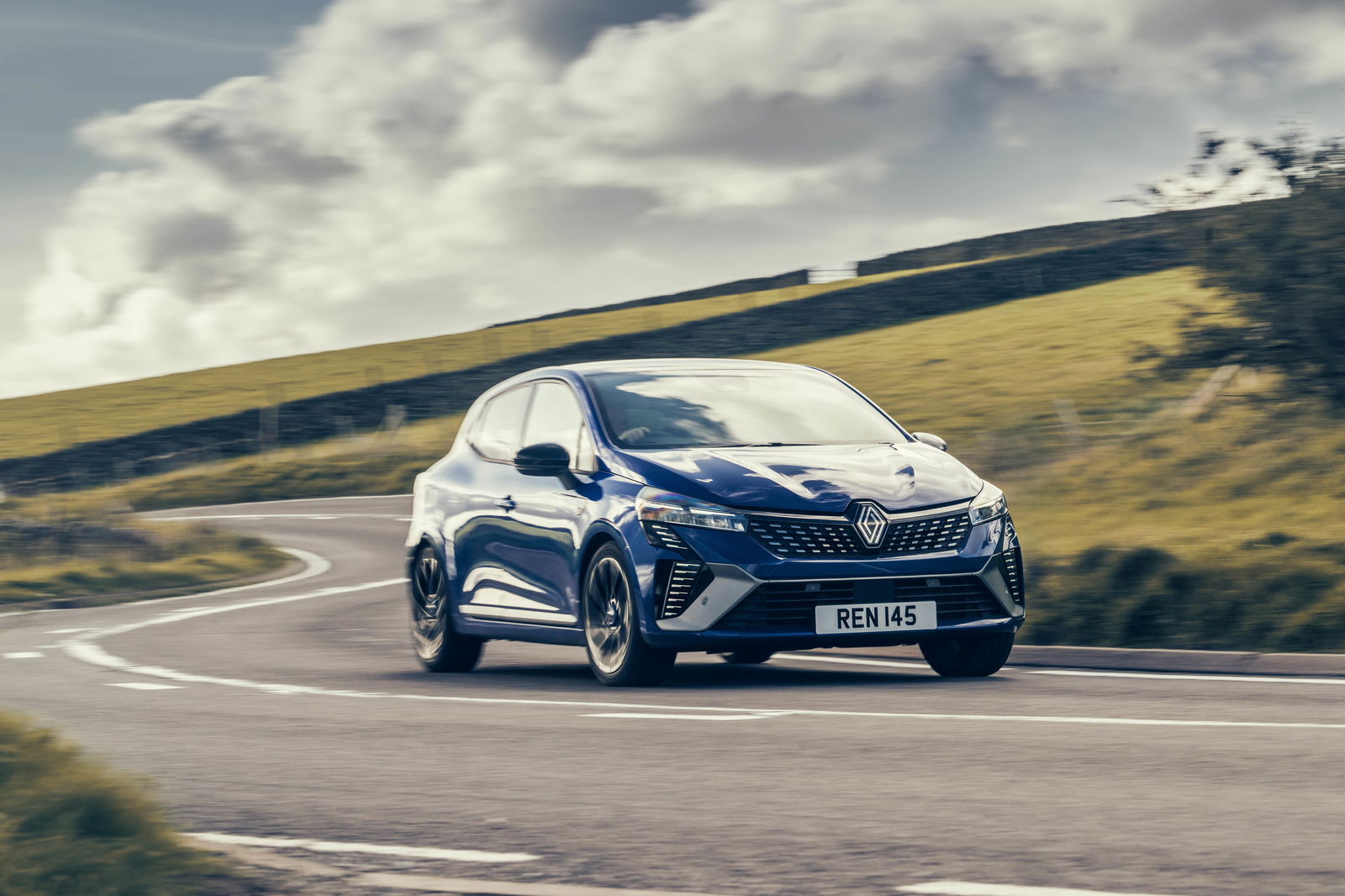
The hybrid also has an utterly baffling transmission that combines a four-speed automatic mated to the petrol engine and a two-speed gearbox hooked to the electric motor. These two gearboxes can provide drive to the wheels in any one of 14 different ways. You don’t need to know any of this – to use it, it’s just like a traditional auto, with an extra spot on the selector for maximum regen braking.
It’s the hybrid that we’ve been driving. In addition to 143bhp, you get 151lb ft of torque, good for 0-62mph in 9.3 seconds and a top speed of 112mph. Renault quotes a combined 65.7mpg figure, with high 50s comfortably achievable in reality.
We drove it in the top Esprit Alpine trim level, which sees the car adorned with badges from Renault’s sporty sub-brand. This, sadly, is as close as we’ll get to a real hot Clio these days. While the new electric R5 is getting a fully-fledged Alpine version – the A290 – there’ll be no such petrol equivalent in the mould of the fantastic old Renaultsport Clios. Sigh.
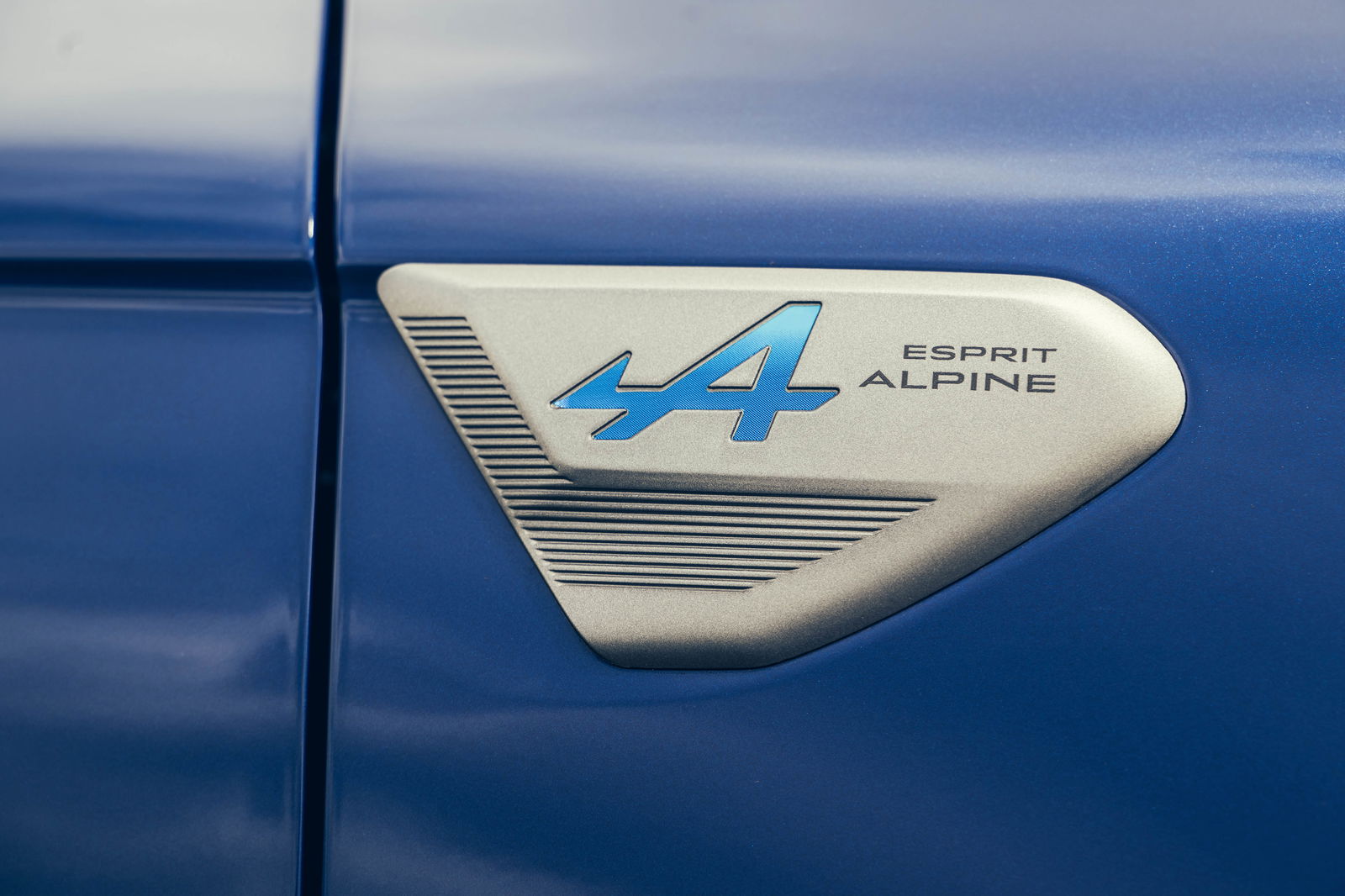
The Esprit Alpine does at least get you some very nice sports seats up front, which look and feel excellent. In fact, most of the inside does – it’s among the best in its class. The days of small French car interiors feeling like they were assembled from stale baguettes are long gone. Everything in the Clio feels solid to the touch, and none of the materials feel cheap.
It’s all sensibly laid out, too. The 9.3-inch screen is unusually in portrait orientation, but it’s clear and easy to navigate, with a bank of physical shortcut buttons below. It also gets nice, chunky and surprisingly tactile dials for the climate control.
Leg- and headroom are good up front and adequate in the rear, although taller drivers will turn it into a strict three-seater. It’s also a shame that an otherwise good interior is a bit dark and gloomy. You only get one choice of interior spec per trim, and they all present you with a wall of nondescript grey. A little Tricolore and some flashes of Alpine Blue are the only nods to colour on the top trim.
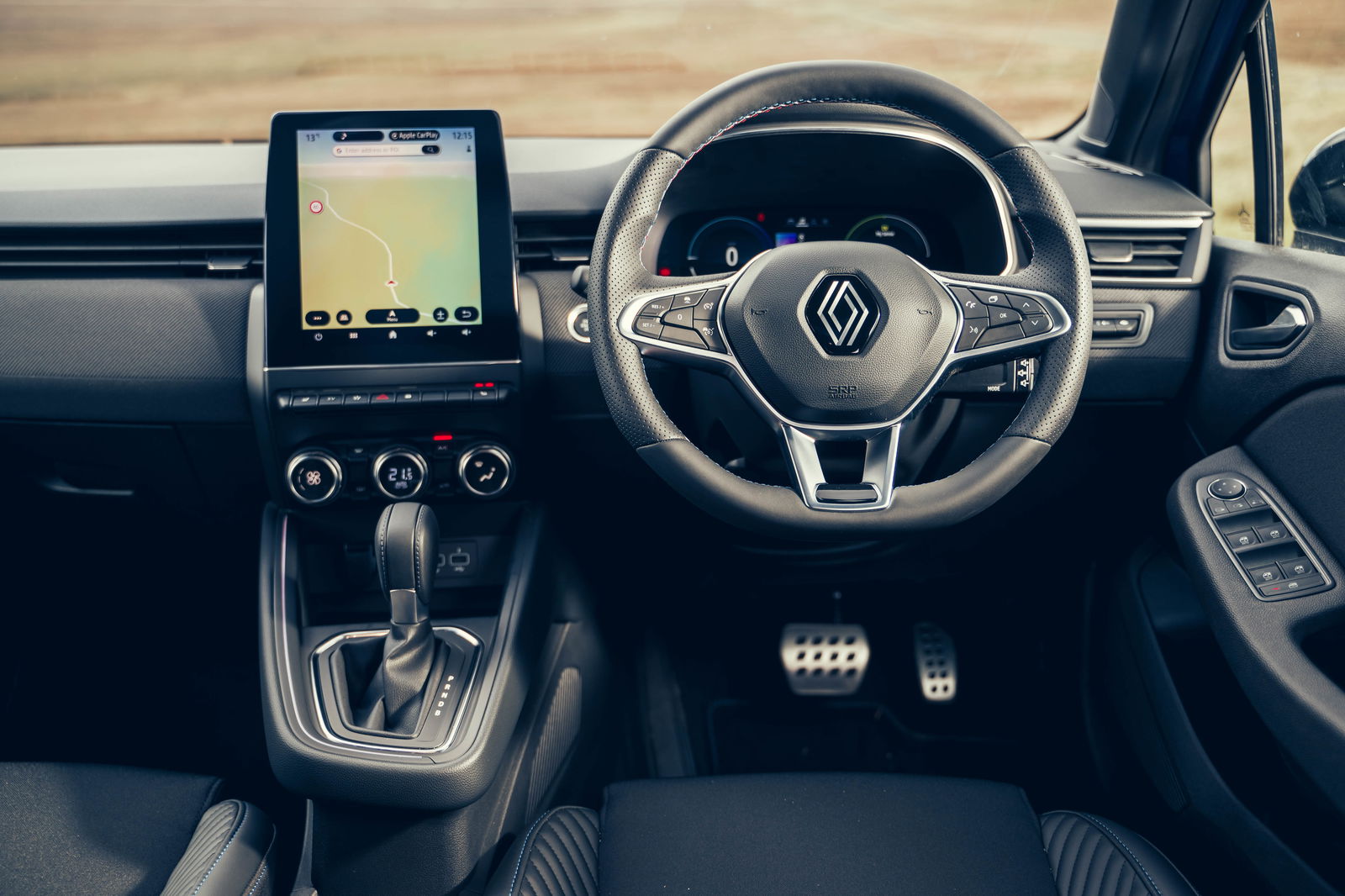
Generally, though, the interior is a huge improvement over what came before. In top trim, you get all the kit you could really hope for – well-calibrated adaptive cruise control, sensors all-round, a backup camera and more.
Where the Clio’s always excelled in its near 35-year life is being a bundle of fun to drive, and it’s more of the same here. It corners with plenty of verve, with light, direct steering and a keen, grippy chassis. It’s not quite as good fun to throw around as arguably its biggest rival – the Peugeot 208 – but it’s still a giggle in that carefree way that little French cars have always been so good at.
Meanwhile, it rides like a big French car, doing an excellent job of soaking up broken surfaces, bumps and compressions. It’s also a comfy, hushed thing at a cruise, perfectly amenable to a long motorway run.
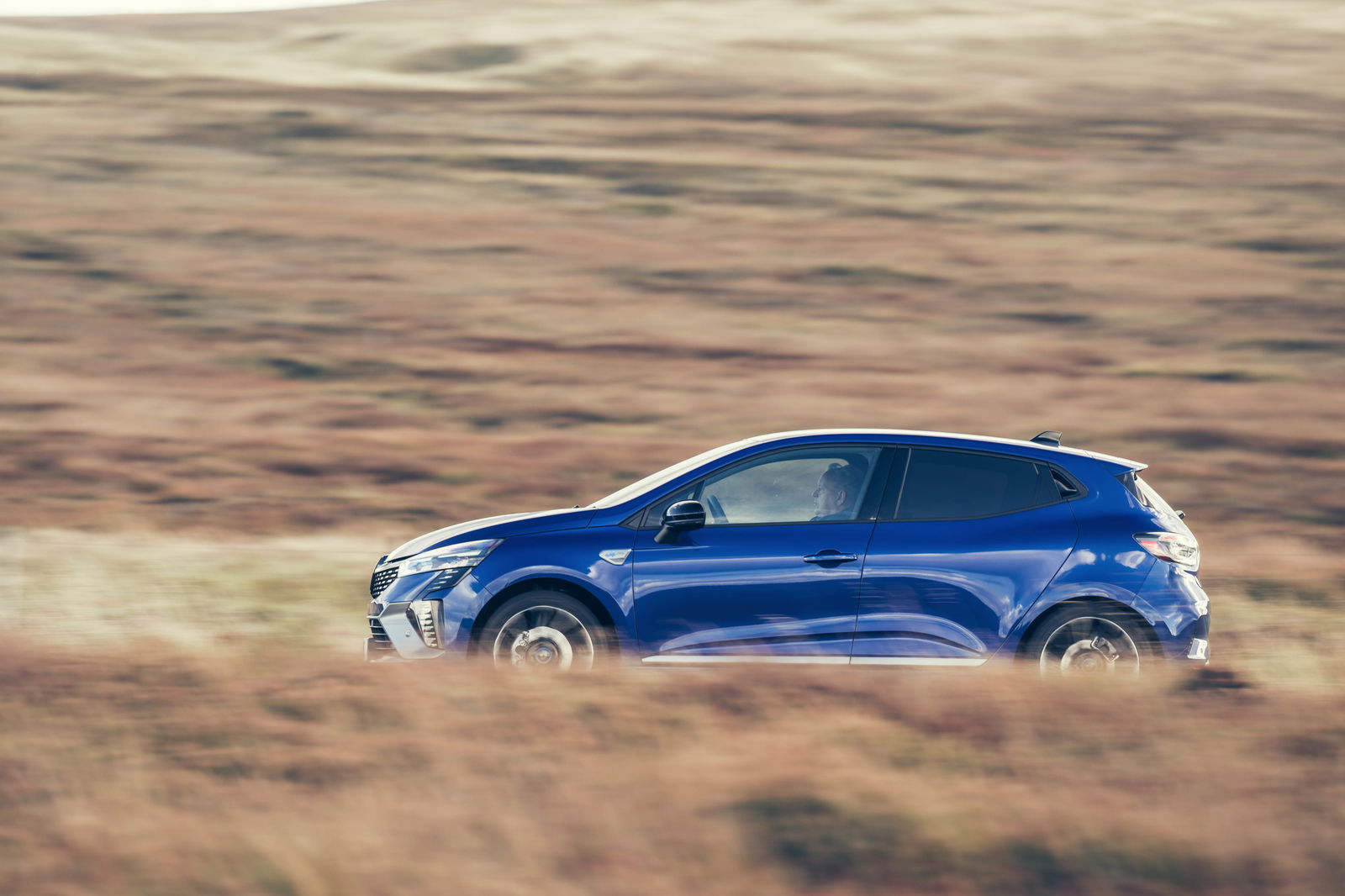
This hybrid powertrain’s got real pep, with the car defaulting to zippy electric drive when you start it up and prioritising it around town. Once the petrol engine does kick in, it’s a keen if occasionally coarse motor, never really leaving the Clio wanting for grunt.
The gearbox, though complicated in theory, is smooth in its changes and responds quickly to throttle inputs, although will every now and then refuse to change up when you expect it to. The unusual gearing setup means no paddles for you to take matters into your own hands, but you very rarely need to.
The biggest dynamic grumble is a common one with hybrids: the brakes. They’re fine at higher speeds, but a clumsy handover between regenerative braking and physical brakes often leaves you lurching uncomfortably to a stop around town.
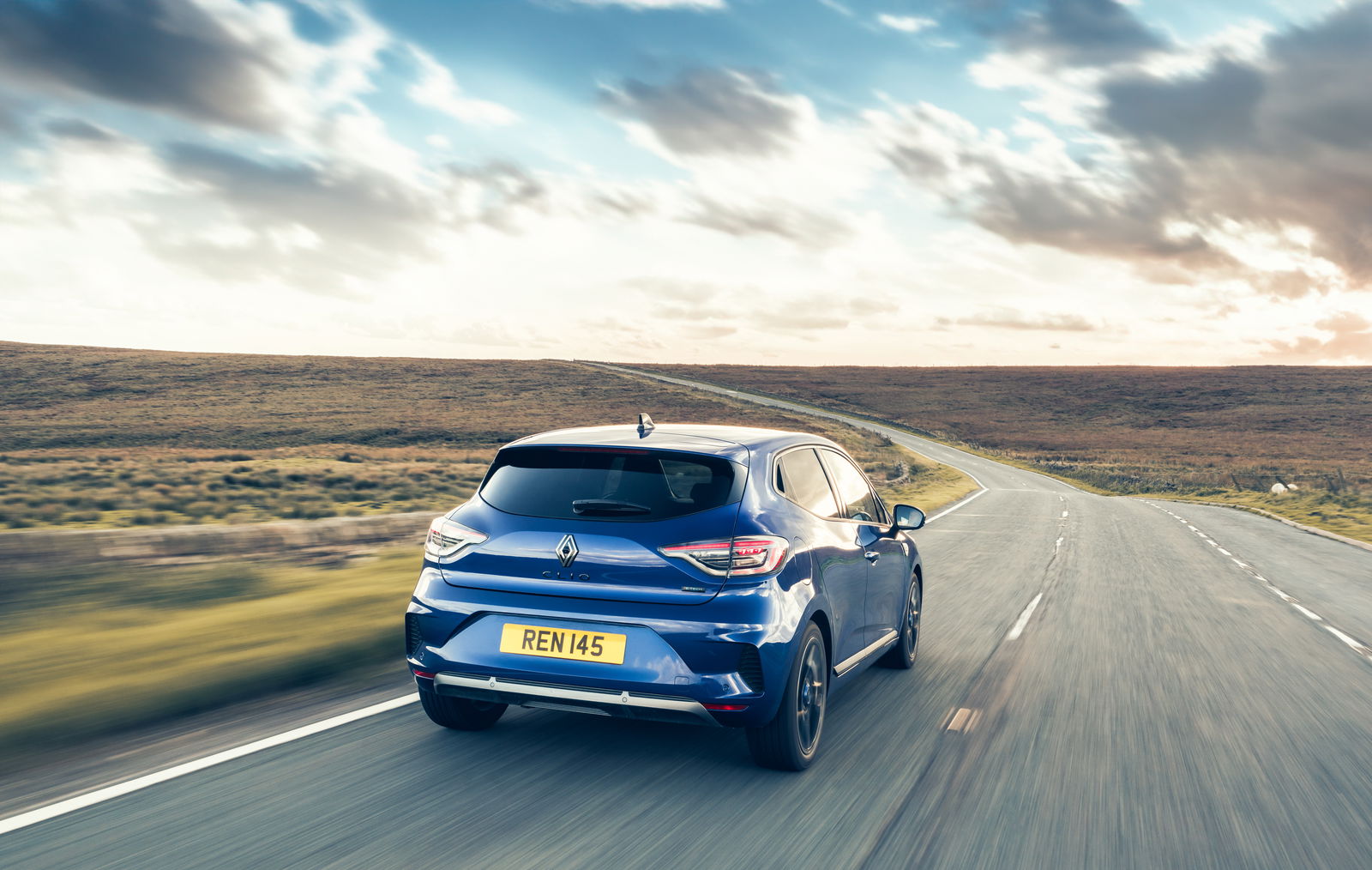
The Fiesta’s death and Polo’s age mean that between the Clio and the 208, France pretty much has the supermini class locked down. There are strong cheaper alternatives, like the MG3 or Suzuki Swift, but the Clio is not priced unreasonably. A basic, manual Evolution model will set you back £18,095 before options, while this toppest of top specs comes in at £24,795.
With this update, the Clio’s future is secure for at least a little while, and it’s as strong a package as ever – roomy, efficient, and grown-up feeling without sacrificing the simple joys that a small car can bring. Vive la supermini.
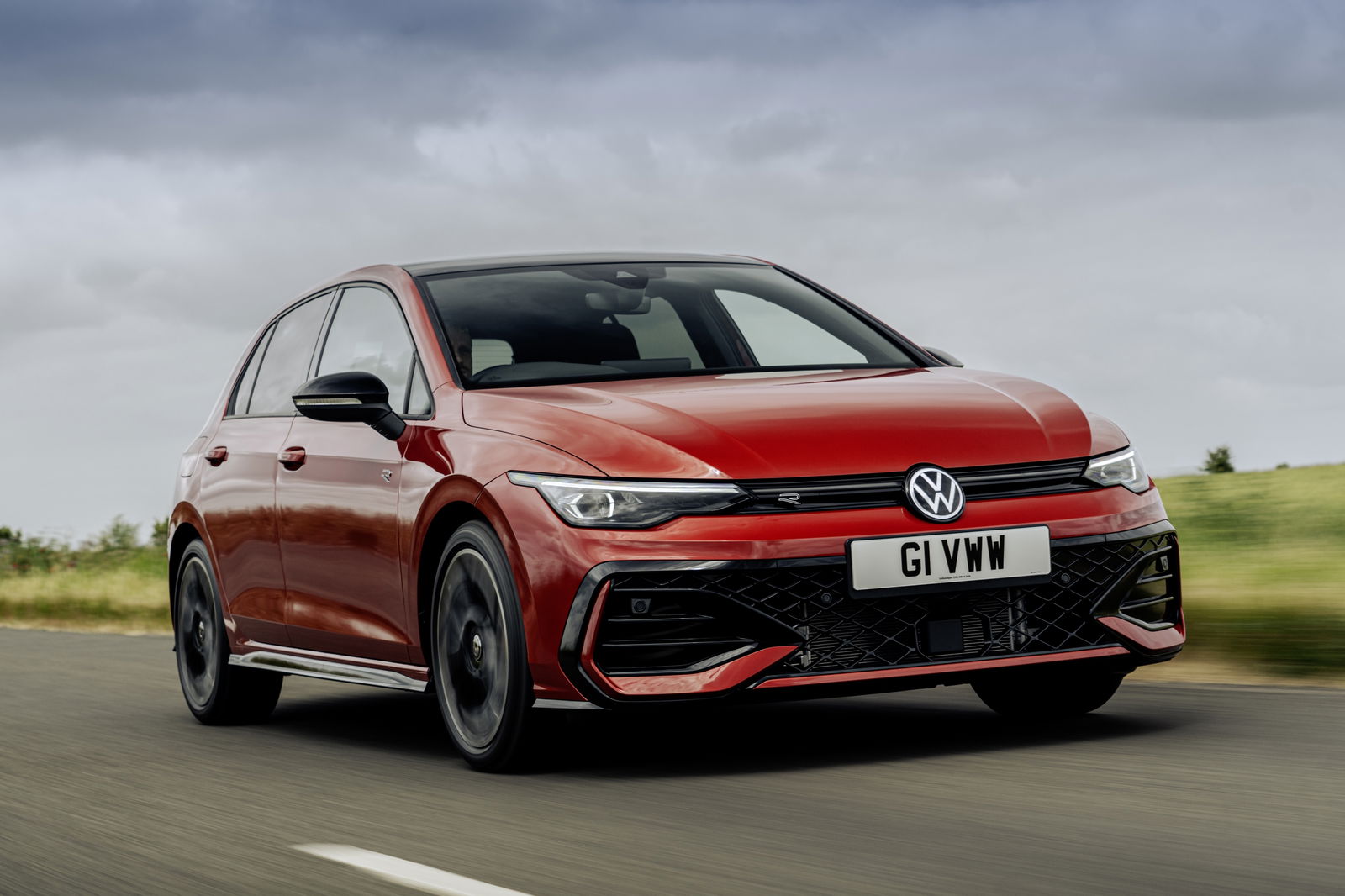
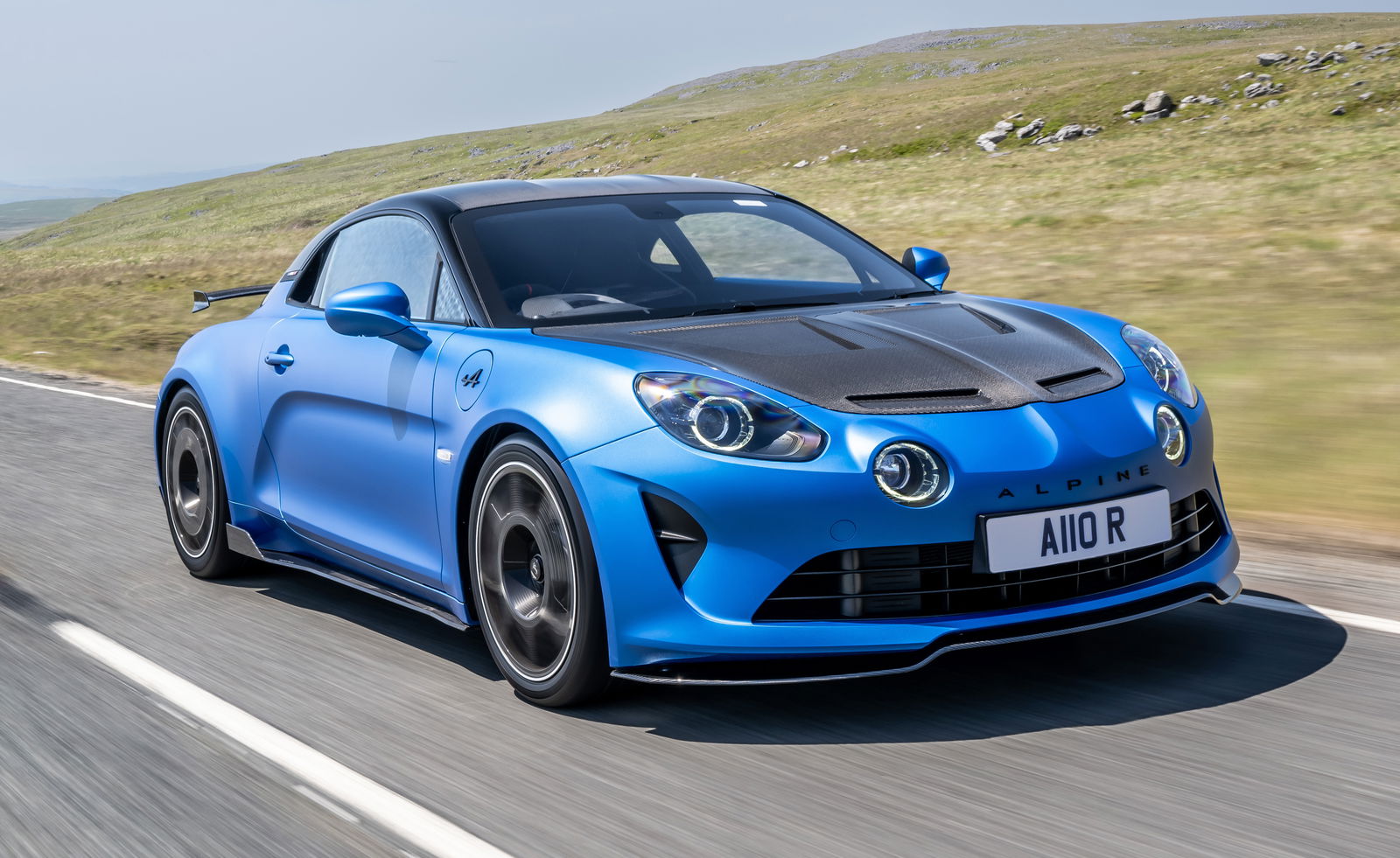

Comments